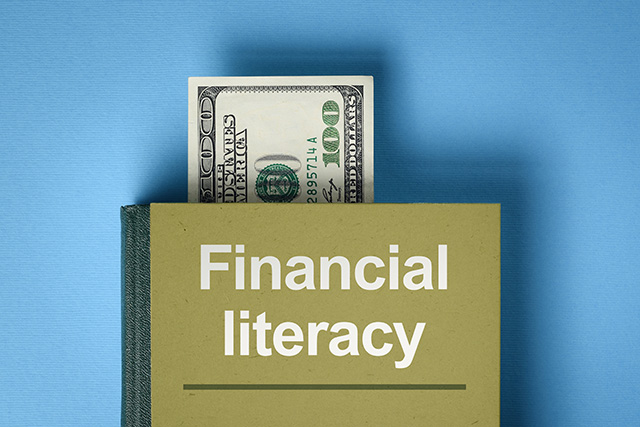There’s no question that staying on top of your finances is a critical component to ensuring a comfortable future. Doing so requires an understanding of financial products and terms.
Financial terminology can often seem like a foreign language and it’s easy to get confused and overwhelmed. To make things clearer, here is a glossary of commonly used terms that you’re sure to come across at one point or another.
401(k) Plan
A retirement savings plan set up through an employer. Employees can make contributions that are deducted straight from their paycheck. It is common for employers to offer matching contributions up to a certain level. Many plans also offer a Roth option (see below).
Annual Percentage Rate (APR)
Expressed as a percentage, APR is the annual cost of a loan, including the interest and all fees.
Annual Percent Yield (APY)
The annual return of an investment over the course of a one-year period.
Asset
Any resource owned by an individual or business that has economic value. The most common examples include cash, real estate and investments.
Asset Allocation
The manner in which money is invested. There are three major asset allocation categories: stocks, bonds and cash. Each of these react differently to changes in the market. Therefore, it is commonly suggested to diversify your portfolio, spreading your investments in different categories in order to minimize risk.
Bonds
A debt instrument used by governments, corporations and other institutions to generate money. When an individual purchases a bond, they’re lending money to said entity for a specific period of time. The bond owner holds no ownership of the institution but receives periodic payments based on the interest rate and gets paid back in full on the bond’s maturation date.
Capital Gains
The increase in value of an asset or investment above its original purchase price. This gain is only on paper, and thus not taxed, until the asset is sold.
Certificate of Deposit (CD)
An investment in which a specific amount of money is deposited into an account for a specific amount of time in order to gain interest. The money must be kept in the account for the entirety of the term to earn the full interest. Early withdraws result in penalties.
Compound Interest
The interest on the initial principal of a deposit or loan as well as interest accumulated over previous periods. (Example: A $100 investment with a 5% interest rate will earn you $5 after the first year. But at the end of the second year, you’ll earn $5.25; $5 on the initial $100 deposit and $0.25 on the $5 in interest.)
Contribution Limit
The maximum amount of money an individual can add to a retirement account in a given year.
Credit Score
A numerical representation of an individual’s creditworthiness. Credit scores are calculated based on several factors including the length of your credit history, late payments and total amount of debt. Scores range from 300 to 850 with a higher score indicating an individual is more likely to pay bills on time. Lenders and creditors use credit scores to formulate terms on a potential loan. Generally, higher credit scores result in more favorable terms.
Interest
The fee charged by a lender to a borrower for lending them money. It is expressed as an annual percentage of the principal.
Individual Retirement Account (IRA)
Retirement savings accounts that are funded through an individual’s own contributions. There are two types of IRAs: traditional and Roth. Traditional IRAs are funded with contributions from pre-tax earnings. The money is not taxed until it is withdrawn. Conversely, Roth IRAs are funded with earnings that have already been taxed. Withdrawals from a Roth IRA are not taxed.

Money Market Account
A type of savings account in which owners earn interest on the account’s balance. Opposed to Certificates of Deposit, which require funds to remain in the account for a specific amount of time, Money Market Accounts generally allow owners to access via ATM, debit and checks.
Mortgage
A loan used for purchase of real estate.
Net Worth
The difference between what an individual owns (assets) and what they owe (liabilities). It is calculated by adding together all money, investments, and current market value of owned items and subtracting all debt and other obligations.
Principal
The original monetary investment on which interest is generally paid.
Refinancing
The process of securing a new loan to pay off one or more existing loans. It is a common practice for borrowers to refinance in order to receive more favorable terms and save money.
Required Minimum Distribution
The minimum monetary amount required for retirement savings account holders to withdraw each year. Distributions are required to begin when account owners turn age 72-73. The amount of the withdrawal is based on the value of the account on December 31 of the previous year and the individual’s current age. Failure to withdrawal the required amount could result in increased taxes.
Required Minimum Distributions do not apply to Roth IRAs.
Reverse Mortgage
A financial tool for homeowners age 62 or older that allows them to access the equity they have in their home. A Reverse Mortgage can help you stay in your home while providing additional financial freedom and peace of mind with tax-free income.
Stocks
A share of ownership of a company. An individual who buys a company’s stock has part ownership of that company’s assets and earnings.















